It was a perfectly COVID Christmas.
In the morning, Angelica Rojas got the best present of her life. The doctor told her that the man she had married six years ago was awake and getting better after nearly a month in the intensive care unit at Providence St. Jude Medical Center.
By the afternoon, the virus sought to steal back the gift.
“Heavenly Father, please eradicate this fever out of his system,” Rojas prayed Friday, as she watched Eduardo through an iPad screen. A damp washcloth lay on the 50-year-old’s head. A tube stuck out from his neck.
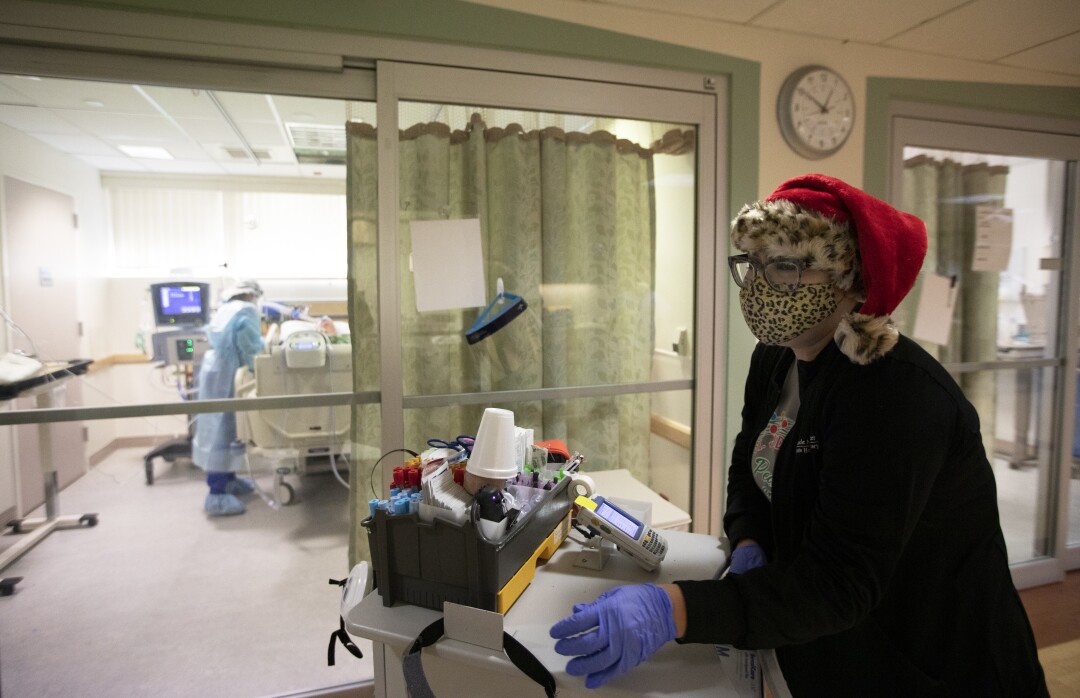
On Christmas Day in the intensive care unit in Fullerton, there were no carols — just a chorus of beeps that nurses knew signaled a low heart rate or oxygen levels dropping. There were no decorations, no tree, not much joy. The only splashes of red and green in the 32 rooms were the wires snaking across some patient beds.
“Heal him from the top of his head to the bottom of his feet,” Rojas pleaded. “We ask this in the precious name of your son Jesus Christ and the Holy Spirit, amen.”
In the summer, at its peak, Providence St. Jude in Orange County had about 70 patients with COVID-19. As of Christmas morning, there were 190. Of those, 42 were in the ICU.
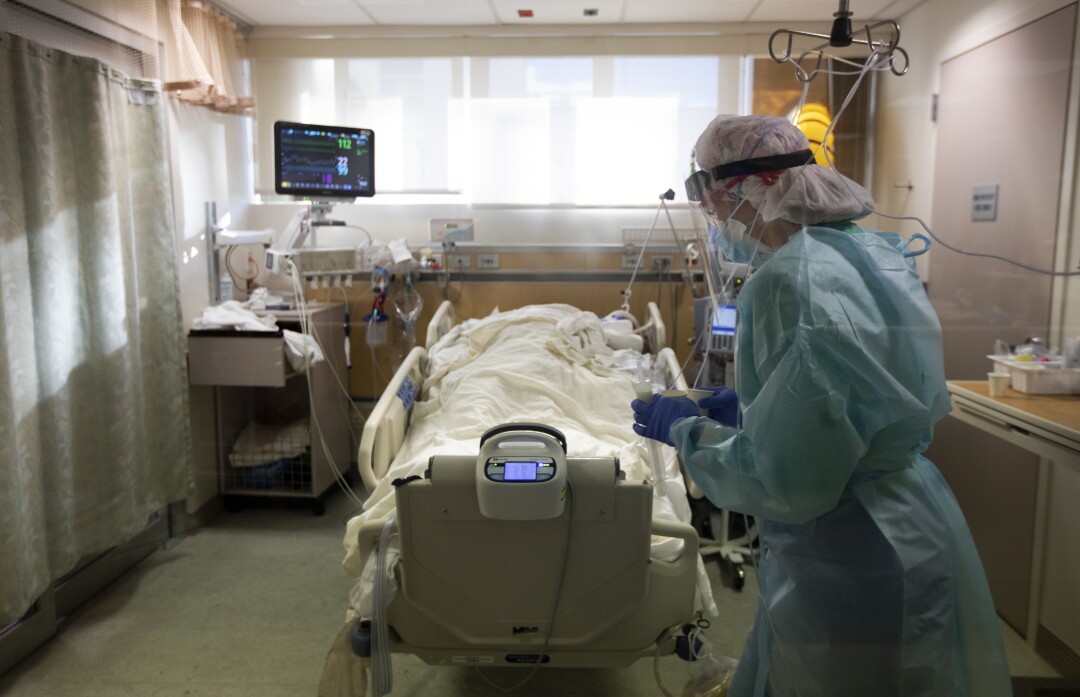
That day, in 4 North ICU, a family said goodbye to a loved one taken off the ventilator.
The painful Christmas scene unfolded in a county that has been the most vocal against statewide restrictions. Earlier this month, the sheriff said he would not enforce Gov. Gavin Newsom’s stay-at-home order. In Huntington Beach — ground zero for protests against statewide shutdowns — the mayor pro tem has refused to wear a mask at public events.
Dr. Harry Peled, medical director of the ICU, called the last few weeks, “incredibly grim when you look at the numbers of cases and the people refusing to wear masks.” He called the resistance to following health directives, “highly aggravating for all of us in healthcare.”
They had come up with a solution for those people, he joked wryly: “You get to walk the COVID rooms without any PPE.”
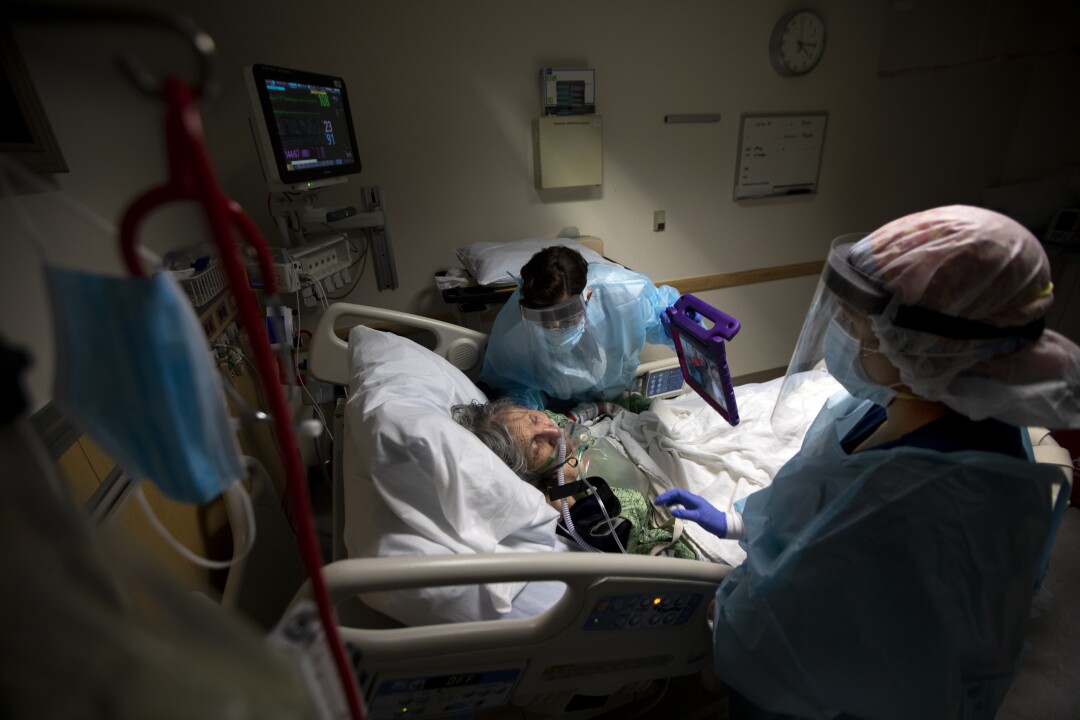
For healthcare workers, the dire 2020 holiday season has underscored how dangerous and volatile the pandemic has become. In Orange County, as of Saturday there are nearly 2,000 people hospitalized, 432 of them in the ICU.
“We see what these patients are going through,” said Dr. Michael Katz, a critical care doctor. “It’s hard for us to predict which person once they get the coronavirus will be one of the ones who become severely ill. A lot of the ones who become severely ill don’t do well, despite our best efforts.”
Suffering through a surge that they believe stems from Thanksgiving travel and gatherings, they fear what’s coming next.
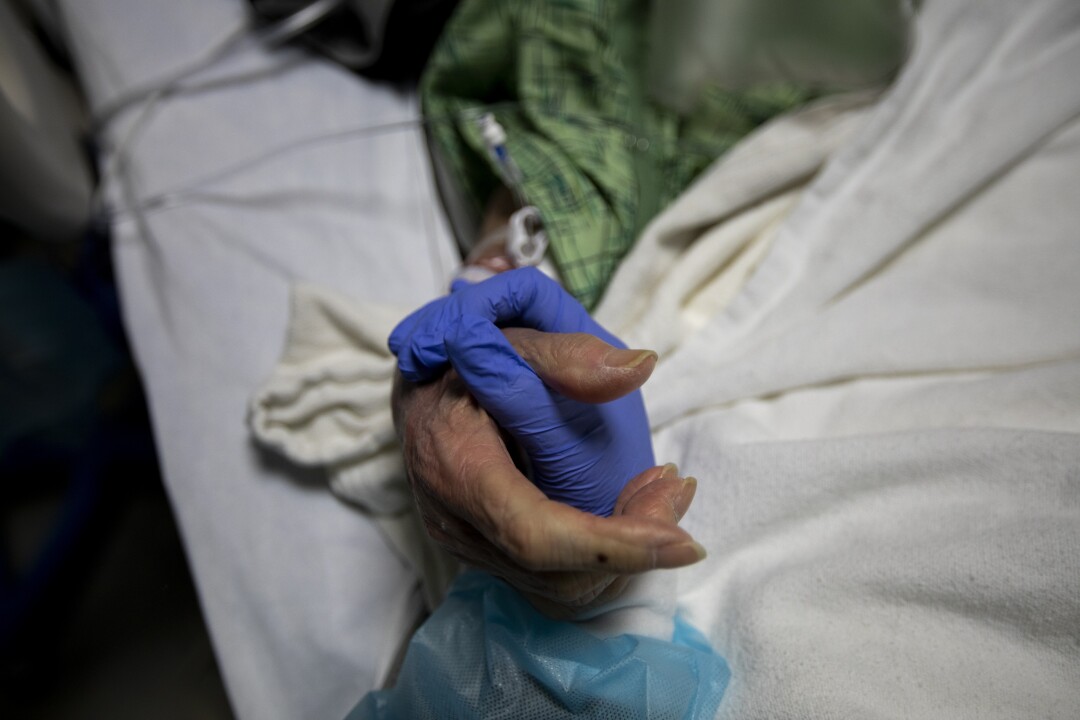
“We’re very concerned that people getting together for Christmas and New Year’s is going to lead to an even bigger wave,” Katz said.
Every room is a window into the indiscriminate cruelty of the virus.
There are patients in their 90s, 50s, 40s and 20s, some admitted the night before and others who have been there for weeks. Behind sliding doors, some wore pressurized masks — the max level of support patients can receive, short of going on a ventilator.
Many of the patients were sedated. When they woke up, nurses had to tell them where they were. Staff shifted patients’ positions throughout the day so they wouldn’t get bed sores.
Inside Room 22, nurse practitioner Gloria Franklin held a purple iPad up to Margaret Gallegos-Capetello. Her niece, niece’s husband and their two children were waiting to greet her.
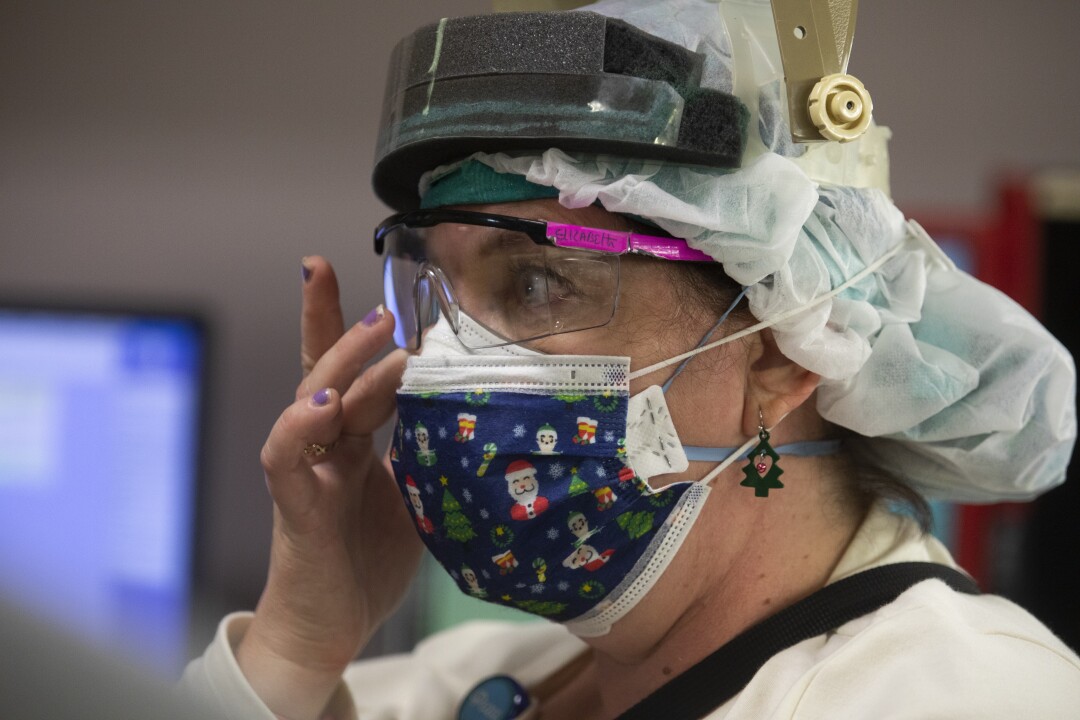
“Margaret, open your eyes darling,” Franklin coaxed.
“We love you Aunt Margaret,” her family called out from the screen.
The 91-year-old, who once helped put together airplanes for McDonnell Douglas, had gotten sick with COVID about a week before in her senior living community. When her oxygen level dropped, she was admitted.
“You need to try and get better, OK?” said her niece, Rosemary Kinder, her voice cracking with emotion. “Stay strong for me.”
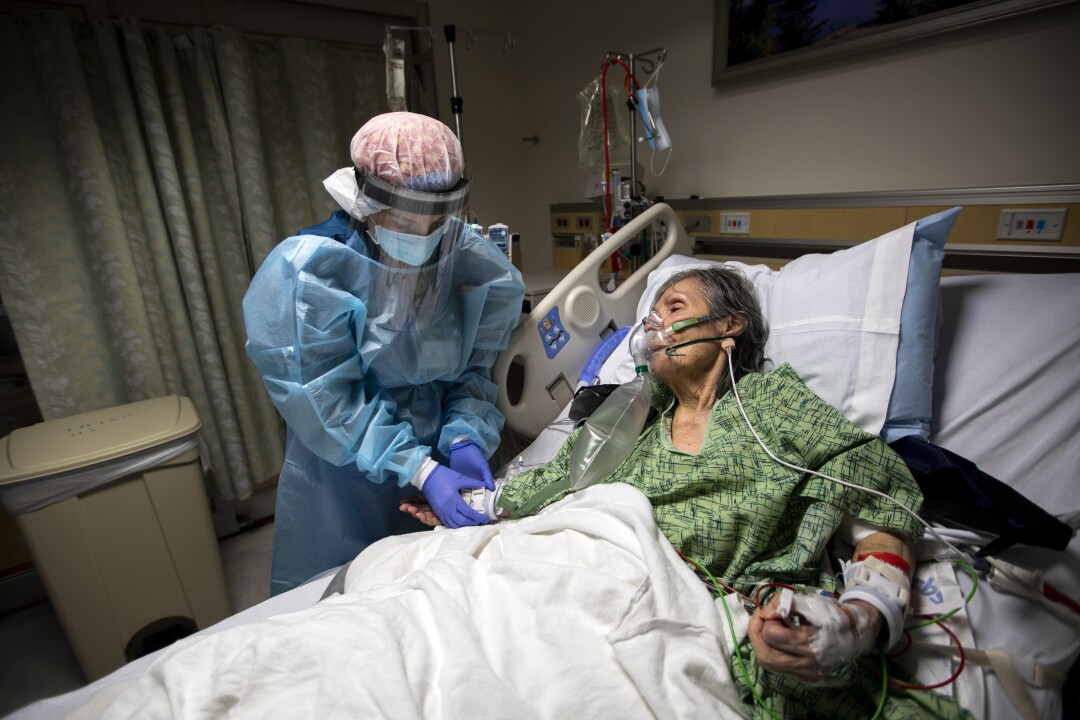
As Gallegos-Capetello struggled against her mask, her nurses urged her to take deep breaths. When the aqua number — which signaled her oxygen level — began to drop, Franklin told the family they would have to end the call.
“For all that you’ve been through, you’re doing great and we love you very much,” her great nephew, Robert Kinder, said. “Aunt Margaret, we want you to know that we’re here for you and we’re always watching you.”
Down the hall, in Room 3, Angelica Rojas told her husband over and over that she loved him. When she asked if he loved her, he moved his mouth to form the words but was unable to speak.
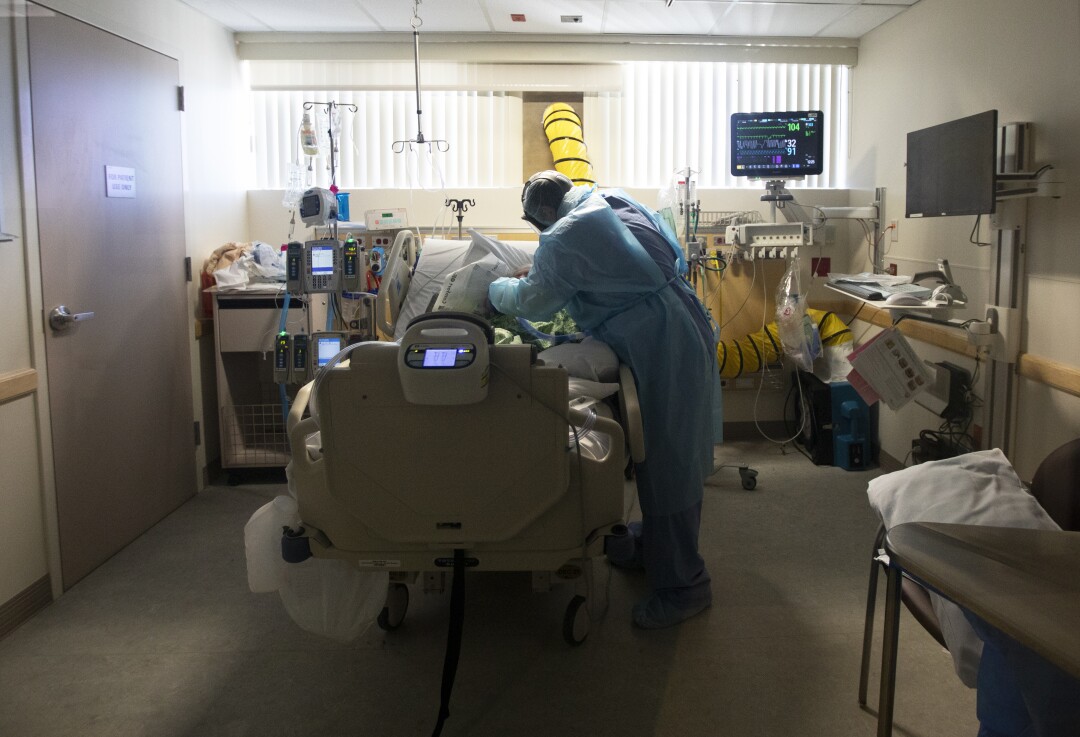
The virus had swept through Eduardo’s family. First it was Eduardo’s brother, then his parents, another brother, then himself and his wife. Then two of her daughters were infected; one is 22, the other is 31 and pregnant.
Eduardo, Katz said, “almost died every day for about two weeks.” Christmas Eve was the first day that he began to wake up.
The next morning, Katz saw him communicating with a nurse, the first time he’d seen him able to do so.
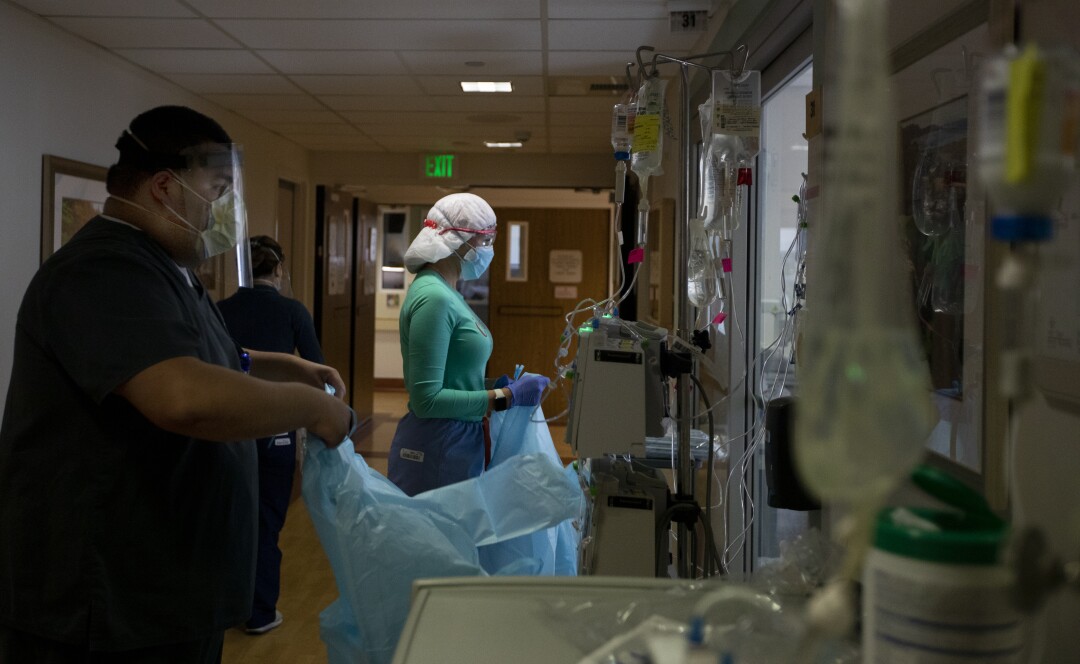
“When I heard this morning that he said good morning to the nurse in ICU, it was like the best feeling I’ve ever felt in years,” Rojas said. “This is the best Christmas gift that I’ve ever received in my entire life.”
Like she does every time she calls, Rojas said a prayer, thankful that her husband’s eyes were open. This, she said, was “the most beautiful Christmas.”
“Jesus is holding your hand,” Rojas told her husband. “Don’t let go.”
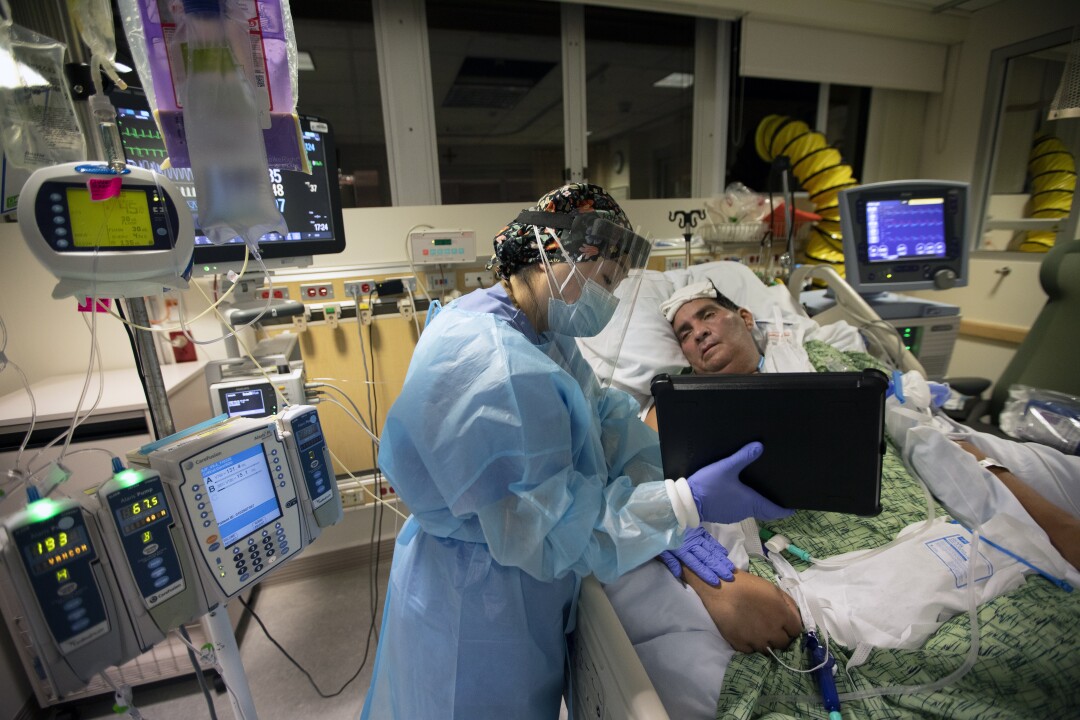
That afternoon, nurses called their own families from the break room, where someone had brought in surgical masks decorated with snowmen, trees and candy canes.
“Merry Christmas, I love you guys,” a registered nurse told his mom over video chat. On a nearby bulletin board, a sign read, “There is hope even when your brain tells you there isn’t.”
Elizabeth Waite, a registered nurse, volunteered to work Christmas because she doesn’t have children and she wanted some of the other nurses to be able to spend time with their kids.
That morning, she and her husband exchanged cards before she started her shift. In an attempt to be festive, she wore Christmas-tree earrings, her surgical mask featured Santa and her grey socks had snowflakes.
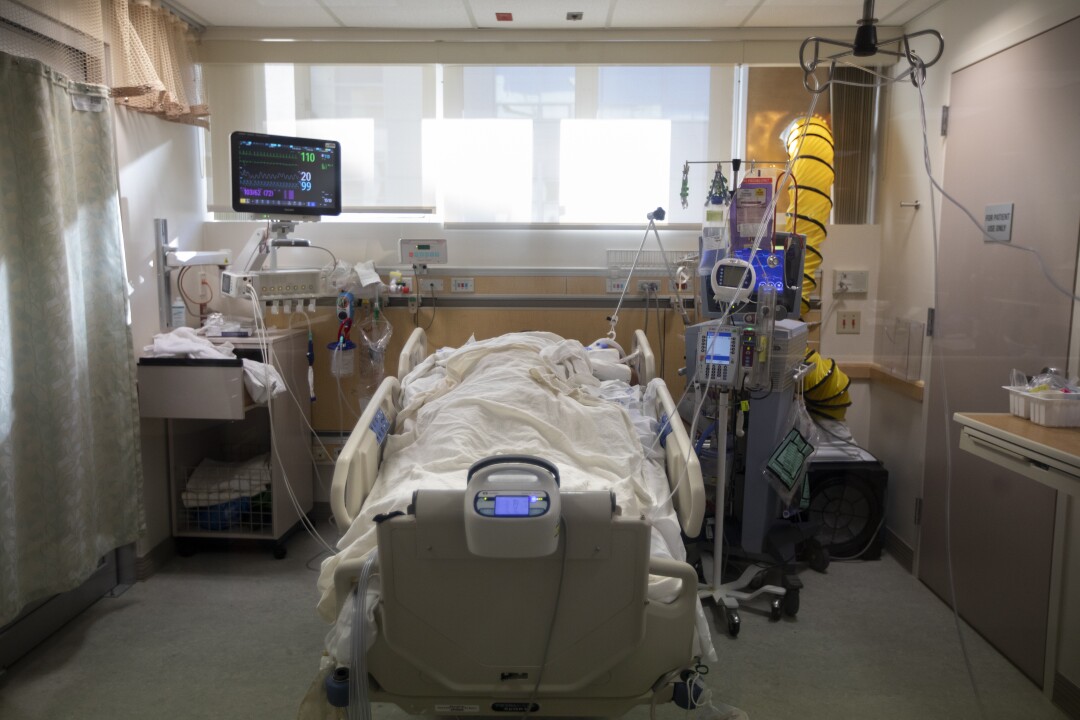
“I always work Christmas and I don’t mind, it’s normally not a big deal. But it’s sad here,” Waite said, tears rolling out of the corners of her eyes behind her protective lenses. “It’s harder this year.”
“I just pray every night for these people.”
Joan Pung, a registered nurse, had celebrated the holiday the night before with her husband and two sons, 7 and 2, after she finished her shift at 7:40 p.m. They had opened presents until midnight.
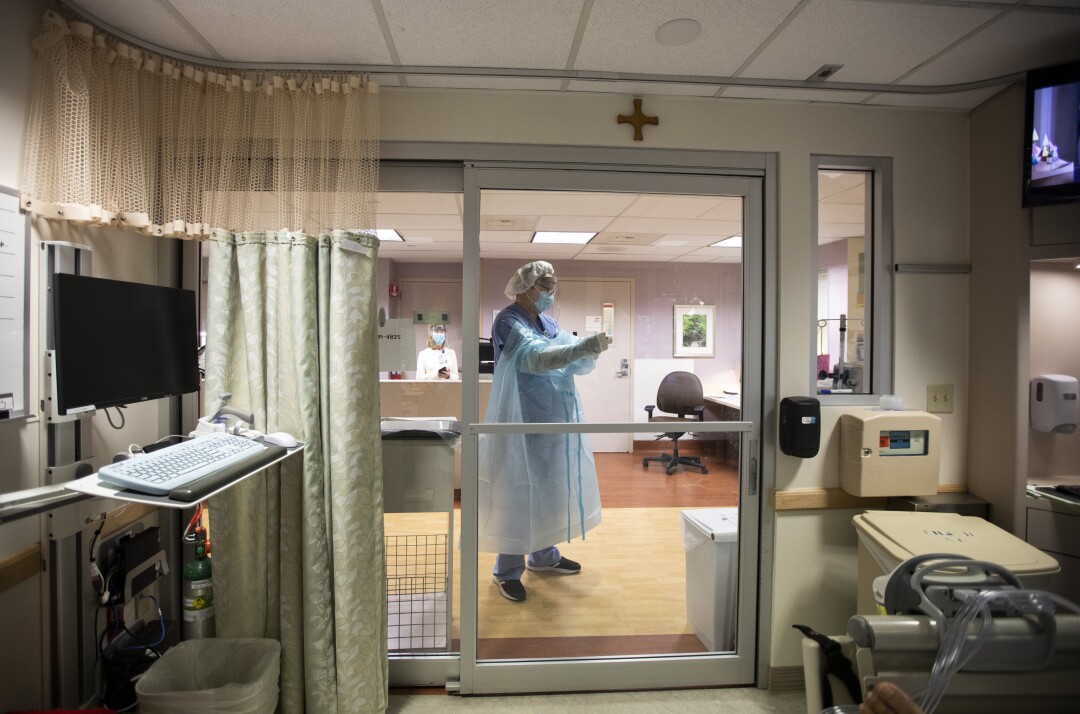
The next morning, she was back by 6 a.m., ahead of another 12 hour shift. She marked the occasion with a long-sleeved green shirt that read, “All I want for Christmas is peace rainbows and unicorns.”
“I do miss them,” she said of her sons. “But then I know work is also in need.”
The last few weeks, Pung said, had been “unbearable.” For a while, it felt as if every day there was a code. Another life slipping away. She barely got a chance to take a drink of water or sit down.
But Christmas, Pung said, felt “like a good day.” There weren’t many patients they had lost or come close to losing.
“It’s a Christmas miracle,” she said.
Times staff photographer Francine Orr contributed to this report.
"Many" - Google News
December 27, 2020 at 08:00PM
https://ift.tt/2KVY4d2
Christmas Day in an O.C. ICU: Not many miracles but plenty of pain - Los Angeles Times
"Many" - Google News
https://ift.tt/2QsfYVa
Shoes Man Tutorial
Pos News Update
Meme Update
Korean Entertainment News
Japan News Update
Bagikan Berita Ini














0 Response to "Christmas Day in an O.C. ICU: Not many miracles but plenty of pain - Los Angeles Times"
Post a Comment